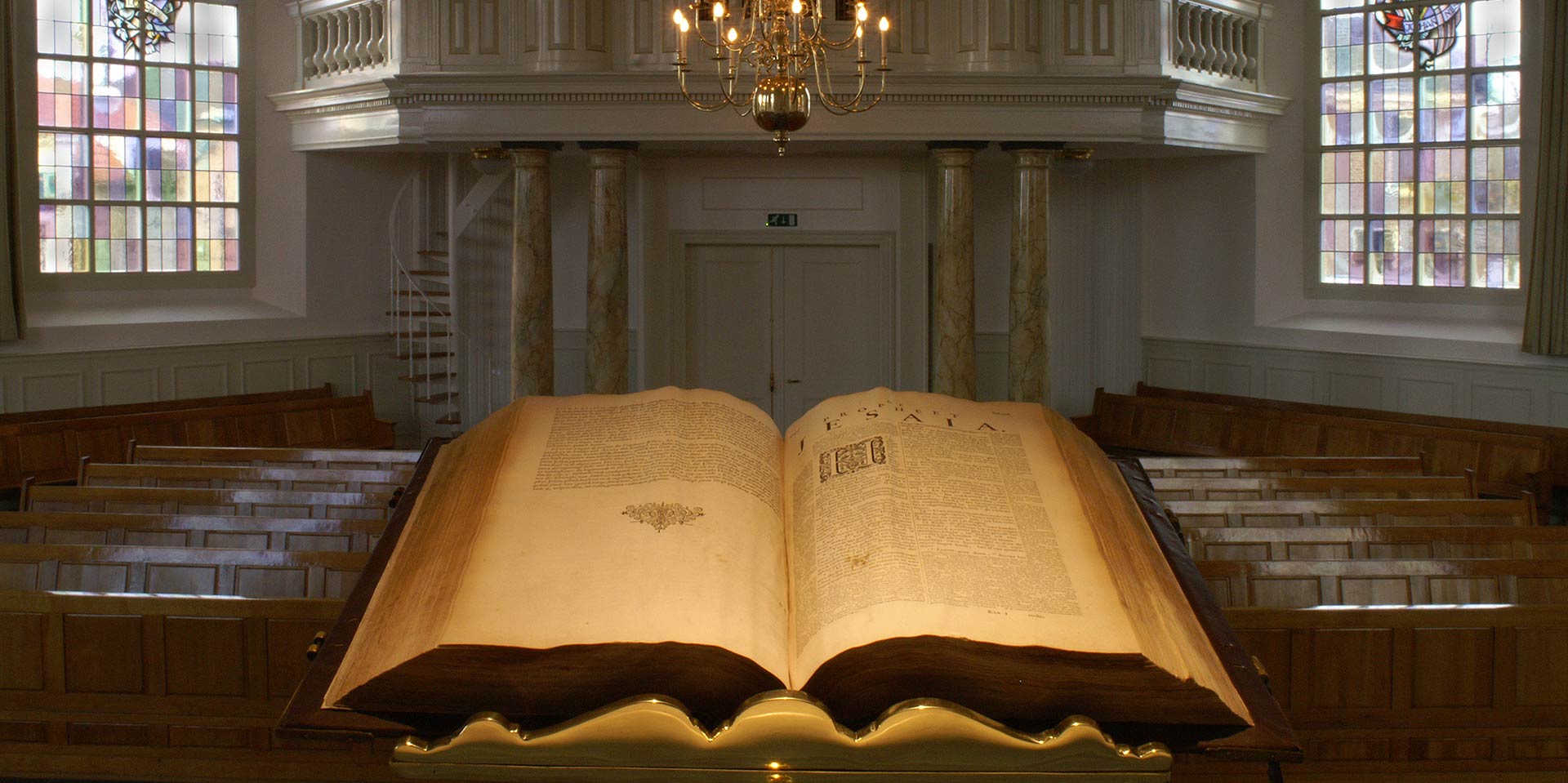The dialectical spirit of ecumenism gives rise, among other things, to a question whose full answer is still awaited: How is it that the critical spirit and rationalism of Enlightenment origin, combined with making the Bible available to ordinary people, has led to so many schisms?
Is reason to blame? Church heresy? The church’s lust for power? Or maybe the ecclesiological meaning (for example, “The church does not make mistakes”)? All of these actually lead to the most important question: “Where is the truth?”
In such a fragmented postmodern Christianity, ecumenism seems like a utopia, especially since the history of Christianity has already confirmed to us how easily attempts at unity fail. As we observed in the two previous articles of this series, the Christian ideal of being “one” was strongly contested, in the history of the church, by Christological and liturgical disputes or by the sad image of forced conversions; by the idea that “the church does not make mistakes” or by the mistaken understanding that the church institution is the measure of Christianity.
Throughout the ages, sincere searches have generated currents of opinion that have brought minds eager to know the Truth closer to Scripture. What the ecumenical councils of the first Christian centuries failed to achieve, but the Protestant Reformation did, was precisely the liberation of the human spirit and its confrontation with the uninstitutionalised biblical truth.
The spirit of the Reformation has preserved its countercurrent character to this day, in response to the overcomplication of the road to the Bible and the word of Truth. In the context of disconcerting confessional divisions and fragmentation, which inevitably raises the question of “Where is the truth?”, this spirit further legitimises the search for the true faith.
Via Reformationis[1]: the cultural-ideological framework, the individual, and the new reading of the Bible
Unlike many church schisms from the first centuries or from the Middle Ages, the Protestant Reformation was based on the inner motivation of individuals—the desire for the purification of the soul and closeness to God.
The intention of most reformers, who later generated religious movements, was to change the traditional church from the inside. Problems such as corruption, immorality, and manipulative doctrines (purgatory, judgement, the cult of the saints, indulgences, intermediation of salvation, and so on) were defining for the spirit of the Reformation.
Putting the Bible in the hands of the people as the only source of authority made the popes, priests, and some philosophers feel their power and authority were undermined. Ecclesiastical power offered political influence and thus material resources. Consequently, undermining the authority of the traditional church had the effect of undermining its influence and wealth.
In addition, the fact that the church was lenient towards sinners, especially towards the sins of priests, but harsh towards heretics (even resorting to the death penalty), denotes a series of hidden motivations, under the guise of defending the faith.[2]
If the spirit of the Middle Ages instilled in Christians the idea that identity is obtained through obedience to authority, tradition and the collective spirit, the Renaissance changed the direction of identity from the community to the individual. In the Middle Ages, there was a perception that the individual had no self-worth outside of the community.[3] Access to education changed this fact by broadening the sphere of knowledge and conferring an individual identity. This would become the premise of future reformative initiatives.
Against this backdrop of the amendment of religious authority, Martin Luther would build his protest in the Ninety-five Theses of 1517. At the time, the sense of personal responsibility and the acceptance of the Bible as the only authority, at the expense of the papal authority, were common ideas with those of the humanist philosophers. The corruption and lack of education of the clergy, especially in rural areas, made these ideas soon take shape in the consciousness of ordinary believers.
A second observable direction in the spirit of personal resurrection was the ideological and cultural movement of the Enlightenment, which had its roots in 17th-century Humanism and the Protestant Reformation. It emphasised reason in the process of knowledge and opened the way to emancipation.
The legacy of the scientific and cultural influences of the Enlightenment led to the development of liberal Christianity in the 19th century, which opened up new possibilities for a critical approach to the Bible. This inevitably led to intense questioning of all the definitions universally accepted by the traditional Catholic and Orthodox churches, but also by the Protestant ones. Enlightenment ideology was the one that also facilitated the development of restorationist (or neo-Protestant) particularities within the Protestant movement.
The spirit of the Enlightenment was then replaced by the spirit of secularised-atheistic modernism, where rationalism replaced the spiritual. As rationalism proved insufficiently convincing—possibly also following some historical decisions that changed the face of humanity (such as the world wars)—the spirit of postmodernity made its way onto the stage of history. In the postmodern era, relativism replaced absolute truth, while authoritarian and exclusivist attitudes were replaced by acceptance and inclusion. Through relativism, acceptance and tolerance, the ecumenical idea would gain new accents in postmodernity.
The avenues of Protestantism
From a structural point of view, the Reformation was an internal approach of the Christian follower of the Semper Reformanda (“continuous reformation”) concept. From a formal point of view, it took on several distinct forms, assuming various directions of the Protestant spirit. Although the intention of Martin Luther, the “Father of the Reformation,” was to renew the Catholic Church, his reforming ideas were placed outside the church and, consequently, led to the emergence of a new denomination: the Evangelical Lutheran Church.
The historical and religious reality confirmed that the reforming spirit would inevitably lead to the emergence of new Protestant churches. For example, following the reforming ideas of Calvin and Zwingli, the Reformed-Calvin Church would take shape, while the Anglican Church would appear following the break between King Henry VIII and the Pope of Rome. The distinctive nature of these first Protestant churches was that they represented the “magisterial side”—that is, they were churches allied with the political power.
On the other hand, reforming ideas such as those of the Anabaptists (adherents of adult baptism), Unitarians (God is “one”, Christ was a being like us, not God incarnate), and Sabbatarians (worshippers on the seventh-day Sabbath) represented “Radical Reformation” and were spread within Protestant denominations. These so-called “radical” followers did not use violence or constraint, as happened in the “magisterial” churches, but instead used the biblical argument as a source of change for anyone who accepted dialogue.
Both sides of the Reformation—moderate and radical—removed the teachings of papal indulgences, human intercession, some sacramental ceremonies, priestly celibacy, the cult of saints, the cult of relics, the worship of icons, and more. If the magisterial side preserved pedobaptism (infant baptism), the radical side adopted credobaptism (adult baptism).
Pedobaptism, or the baptism of children, had reminiscences in the inherited, state religion, from the doctrine of predestination and from the medieval collectivist conception, while credobaptism, or “believer’s baptism,” emphasised the importance of free will. These primary Protestant churches and their contemporary radical reforming movements would gradually lead to various confessional avenues.
In the middle of the 16th century, as a result of humanist rationalism, the Unitarians appeared in Europe, and profoundly influenced the new continent, America, with their emphasis on morality and reason. Theological liberalism would find its primary roots in this movement.
From Calvinism (follower of predestination) in the 17th century, the Arminianism movement arose, which contradicted the doctrine of predestination and preached free will. Also in the 17th century, the Congregationalists appeared, who perceived the church as the local gathering of believers, while the Quakers appeared as a reaction to the legalistic spirit of the church and its formalism. Personal enlightenment was considered by Quakers to be superior to church authority or even the Bible. They emphasised social egalitarianism, antislavery, and pacifism.
A similar movement emerged in Lutheranism, called Pietism, for which hymns, prayers, social involvement, and personal study were core values. Methodism, another Protestant movement of the 17th and 18th centuries, born out of the reforming ideas of John Wesley, was founded on the same values as Pietism. Methodists accepted the believer’s baptism and emphasised the individual’s need for sanctification as a progressive experience of the Gospel.
In the 19th century, a series of reforming movements (Plymouth Brethren, The Church of Jesus Christ of Latter-day Saints, and more) took on a restorationist character within Protestantism. In the same period, and as a result of the study of the prophetic books of Daniel and Revelation, a millenarian movement appeared.
This inter-confessional movement, which focused on the second coming of Jesus (parousia), led to the formation of denominations such as the Seventh-day Adventists, the Advent Christians, Jehovah’s Witnesses, the New Apostolics, the Apostolic Catholics, and so on. The diversification of the (neo)-Protestant spirit caused a charismatic movement to emerge in the 20th century, called Pentecostalism, which focuses on “sanctification,” in the lineage of Methodism.
America and the Protestant spirit
The concept of political freedom in 17th-century England influenced the spirit of the New World, so that, after the American Revolution in the second half of the 18th century, political freedom made a common front with Protestant freedom. This is why North America was the most favourable place for the development of Protestantism, which was not built on the tradition of historical religious culture.[4]
If America provided Protestantism with an environment conducive to free spiritual development without political interference, similarly, Protestantism provided America with a spirit of social unity.[5] The atmosphere hostile to religious freedom in Europe prompted the decision of many Christians to move to the newly discovered world.
After the first English Puritan pilgrims, Anglicans, Reformed, Methodists, Congregationalists, Pietists, Independents, Lutherans, and Anabaptists continued to immigrate. The following centuries witnessed a spiritual awakening throughout the country and America would acquire the most diverse Christian denominational colouration in the world.
Spiritual individualism, acceptance of the authority of the Bible as inspired revelation, and faith in Jesus as the only means of salvation made the American Protestant spirit of the early 17th century flourish in the 18th and 19th centuries, and become in the 20th century a defender of American religious life. In this case as well, in the spirit of the Reformation, a decisive role was played by the translation of the Bible and making it available to the common people.[6]
Confessional fragmentation and ecumenical (dis)illusions
We have learned that North America provided the ideal context for the development of a religious ideology springing from the Bible as the sole source of spiritual authority. What is paradoxical, however, is the fact that the religious schisms in the Protestant churches outnumber the schisms in the historic churches.
Some statisticians show that divided into six ecclesiastical cultures, contemporary religious confessions would be divided into about 33,000.[7] The Centre for the Study of World Christianity estimated the existence of 34,000 denominations for the year 2000, and for the year 2012, approximately 43,000. In 1900, the number was estimated at 1,600. Some voices project 55,000 Christian denominations for the year 2025.[8]
This upward trend of the multiplication of religious confessions shows, without a doubt, the antagonistic aspect of the idea of ecumenism. Moreover, this fragmentation may indicate a division at the level of the Christian’s inner existence, a fact that can legitimately raise the question of whether it is reasonable to hope for the unity of Christianity in a single faith.
However, a careful examination of the figures leads the reader to an analysis of the terminology of the premises of statistical studies. Sometimes, the term “denomination” is subject to an excessive semantic broadening and thus some religious entities or congregations from different states or with their own identity, but with common beliefs, are considered distinct denominations. Following the same reasoning, within The Complete Pilgrim project, Howard Kramer estimated the existence of fewer than 2,000 denominations involving multiple churches under common leadership and of less than 500 denominations with over a million members.
According to data reported by the Association of Statisticians of American Religious Bodies (ASARB) and the Glenmary Research Centre, in 1980, there were 111 Judeo-Christian church bodies; in 1990, statistics show 132 Christian religious groups; in 2000, only 140 religious groups, and 2010 data include statistics for 236 religious groups.
This shows that, depending on the meaning of the term “denomination,” different studies give different results. If some consider any organisational, theological, or liturgical difference as an indication of a new Christian denomination (although, in reality, those churches are part of the same mother denomination), other churches are divided by national criteria.
Whether we are talking about hundreds, thousands or tens of thousands of religious denominations, the reality is the same: fragmentation. It is no wonder that some voices believe that the massive fragmentation of the Protestant church “undermines the claim of any to be an authentic representation of the true Church.”
Undeniably, since the Reformation until today, Christianity has divided at the pace of geometric progression. Based on this evidence, it can be concluded that there are so many Christian churches that they cannot easily be counted: independent, Protestant, marginal, Orthodox, Roman Catholic, Anglican, etc. Moreover, they are so fragmented that the ecumenical intention oscillates between utopia and imperative, between (dis)illusion and the intentionality of the Christian heritage.
Why so much division among Christians? Where is the truth?
Undoubtedly, confessional fragmentation was also shaped by the knowledge frameworks of the past centuries. One such example would be the existence of tension between “integralist” and “modernist” Catholics within the Roman Catholic Church, even before the Reformation. Integralist Catholics were structurally conservative. They opposed the separation of church and state and modern freedoms, such as the free press, secret societies, Bible societies, etc. As defenders of authoritarian papism, since the Second Vatican Council, from 1960 onwards, they struggled with the authority of their own ecclesiastical hierarchy. Popes John XXIII, Paul VI, John Paul II, and Benedict XVI were modernists. The current pope also stirs controversy among conservative Catholics.
Considering the fact that, in 1907, Pope Pius X condemned modernism and its heresies in an encyclical, and today even Catholic theology is predominantly (post)modernist, what should be the conclusion? Has the Catholic Church apostatised? Does Church modernism represent Church progress? Conversely, did those who remained faithful to the old Catholic spirit apostatise, and do those who moved on and progressed represent the authentic Christian faith?
Most likely, it is not the conservative and defensive character of sticking to traditional conceptions that implicitly represents the authentic, just as ideological change and progress are not a guarantee either. Also, the chronological argument is clearly insufficient as the distinguishing criterion of authentic faith, because before us there was Judas, and before him, there were the Jews; before them there was Cain, and before him, Lucifer. All of them represented the image of God in the beginning.
Should it then be inferred that the faith of a major religious movement is more likely to be genuine? Still, the Revelation of John describes the triumphant church as a remnant… This paints a sad reality, namely that only a few will possess true faith. But wouldn’t it be strange if this principle became the only criterion for demarcation between heresy and faith? Many religious denominations are a minority, and the most extravagant/esoteric/mystical ones have the fewest members…
We observe two possible causes of Christian schisms after the Reformation: revelation (where the impotence of reason is shown) and dependence on God (which implies humility and subordination to revelation). If He is of a different nature than us, the finite/material beings, God cannot be known through the processes of reason and in the absence of His revelatory initiative.
However, the reason based on the Zeitgeist (“the spirit of the time”) or on the creed of polytheistic deities demonstrates the inability to fulfil the biblical desire to “know you, the only true God” (John 17:3). Instead, the ability to let yourself be led and guided implies self-renunciation and humility.
History proves that church authorities, be they Orthodox, Catholic or Protestant, were not spared from ambition and a lust for power. Paradoxically, acceptance, tolerance and pacifism have come to be known today as the fruit of cultural and not religious emulation.
Ecumenism today: the dilemmas surrounding the Truth
The abundance of Christian denominations can be a sign of an identity crisis, which places the unity of the Christian faith in the sphere of a utopian approach. Or, on the contrary, it represents the peak of division, after which only one somewhat obvious solution remains: could this be the renunciation of differences and unity around common things?
Curiously, the schisms diminish precisely the important differences in faith, liturgy, and dogma between the denominations. The narrowing of the specifics of each denomination makes the usefulness and role of each one more and more questionable.
This intra-confessional result, together with the relativistic spirit of the postmodern world, causes the Logos, as an emanation of absolute truth, to be neglected or even ridiculed. In the spirit of relativism and postmodernity, where truth is not a necessity, there are voices that ask: If it doesn’t matter who owns the Truth (or, better said, who is owned by the Truth), does it even matter if there is a Truth?
In recent decades, knowledge has been stripped of its applied character by emphasising love as a natural state of affairs, not as the result of decisions based on what the individual knows and is. We imagine that we can love, even if we know hate, and we believe we can love, even if we are evil. But this is a contradiction: knowing evil, accepting its premises and standing in its proximity, we hate; therefore, we cannot love.
Hence the question: Can you love by being something other than love? Can you love knowing and believing in the values of hate? Radical extremism makes the distinction between good and evil clear, and at the same time illustrates the idea that we become what we believe and act in accordance with what we are (see radical Islamist movements).
If what we believe defines who we are, shouldn’t the question of ecumenism be concerned first with the unity of creed? It is evident that the apparent success of the idea of ecumenism is precisely due to addressing doctrinal issues at the end of the discussions, while the approach of unity on mission and social involvement are recurring themes that occupy the agenda of ecumenical associations.
In addition, it is noted that ecumenical attempts have fundamentally contributed to the creation of a spirit of collegiality and mutual acceptance in interfaith relations, but often these come down to politically correct actions and simple courtesies.
The prayer of Jesus in John 17:21, as a plea in favour of unity, remains a desideratum. It can be reached only through unity with Jesus, who is the Way, the Truth and the Life.
Ștefăniţă Marian Poenariu has a master’s degree in theology, sociology and education. He is a PhD candidate in educational sciences and teaches at Transylvania International School, of which he is the founder.



















